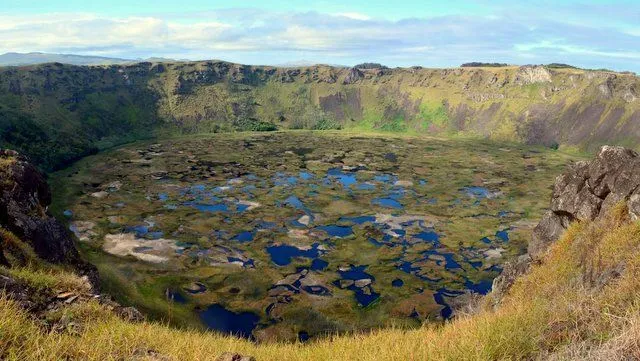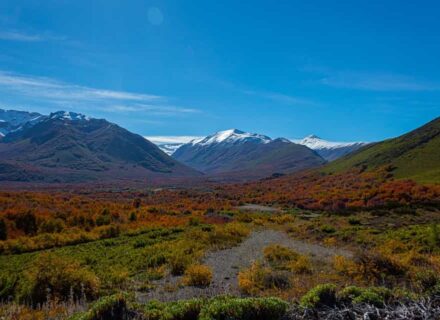Easter Island, a remote speck of land in the vast expanse of the Pacific Ocean, is home to one of the world’s most intriguing natural wonders: Rano Kau. This majestic volcanic crater, standing proudly on the southwestern tip of the island, beckons adventurers and nature enthusiasts to explore its rugged terrain and unearth the secrets hidden within its ancient walls. As visitors embark on a journey to discover Rano Kau, they are greeted with breathtaking vistas, ecological marvels, and a rich tapestry of history and culture.
1. Geological Splendor:
Rano Kau emerges from the landscape like a sentinel of time, its crater rim rising steeply above the surrounding terrain. Formed by millennia of volcanic activity, this dormant volcano boasts a caldera measuring over a mile in diameter, its slopes adorned with lush vegetation and cascading waterfalls. Geologists marvel at the intricate layers of lava rock and ash that tell the story of Rano Kau’s tumultuous past, while botanists study the unique flora that thrives within its fertile confines.
2. Cradle of Biodiversity:
Within the sheltered embrace of Rano Kau’s crater lies a rich ecosystem teeming with life. The crater’s microclimate, characterized by higher humidity and cooler temperatures, provides a haven for a diverse array of plant and animal species found nowhere else on Easter Island. Rare ferns, endemic orchids, and towering banana trees flourish amidst the dense vegetation, while native bird species, including the iconic Easter Island red-fronted parakeet, find sanctuary in the crater’s verdant expanse.
3. Spectacular Views:
One of the highlights of visiting Rano Kau is the panoramic views afforded from its lofty rim. As visitors ascend the rugged trails that encircle the crater, they are treated to sweeping vistas of the Pacific Ocean stretching to the horizon, punctuated by the silhouette of Easter Island’s coastline. To the south, the imposing cliffs of Rano Kau plunge dramatically into the azure waters below, creating a spectacle of natural beauty that leaves a lasting impression on all who behold it.
4. Cultural Significance:
Rano Kau holds profound cultural significance for the indigenous Rapa Nui people, who have inhabited Easter Island for centuries. Ancient legends speak of the crater as the dwelling place of the island’s birdman cult, a sacred tradition in which warriors competed in a perilous race to retrieve the first egg laid by migrating seabirds. Today, remnants of this cultural heritage can still be found in the form of petroglyphs and ceremonial sites scattered throughout the crater’s interior.
5. Conservation and Preservation:
As interest in Rano Kau as a tourist destination grows, there is a concerted effort to promote sustainable tourism practices that protect the crater’s fragile ecosystem and cultural heritage. Conservation initiatives focus on preserving native flora and fauna, controlling invasive species, and minimizing erosion caused by human activity. By supporting responsible tourism efforts, visitors can contribute to the ongoing preservation of Rano Kau for future generations to enjoy.
In conclusion, Rano Kau stands as a testament to the timeless beauty and geological marvels of Easter Island. As visitors explore its rugged slopes, immerse themselves in its rich biodiversity, and contemplate its cultural significance, they are reminded of the profound connection between humanity and the natural world. Rano Kau invites all who venture to its rim to witness the majesty of creation and to cherish the wonders of this remote island paradise.



